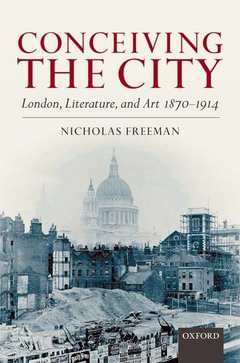Description
Conceiving the City
London, Literature, and Art 1870-1914
Author: Freeman Nicholas
Language: English
Publication date: 09-2007
256 p. · 16.2x23.9 cm · Paperback
256 p. · 16.2x23.9 cm · Paperback
Description
/li>Contents
/li>
Conceiving the City is an innovative study of the ways in which a generation of late-Victorian novelists, poets, painters, and theoreticians attempted to represent London in literature and art. Breaking away from the language and style of Dickens and the static panorama paintings of William Powell Frith, major figures such as Henry James and J. M. Whistler, and, crucially, less-celebrated authors such as Arthur Machen, Edwin Pugh, and George Egerton bent realism into exciting new shapes. In the naturalism of George Gissing and Arthur Morrison, the fragmentary impressions of Ford Madox Ford, and the brooding mystery of Alvin Langdon Coburn's photogravures, London emerged as a focus for dynamic, explicitly modern art. Although many of these insights would be dismissed or at least downplayed by subsequent generations, the ideas evolved during the period from 1870 to 1914 anticipate not only the work of high modernists such as Eliot and Woolf, but also that of later urban theorists such as Foucault and de Certeau, and the novels and travelogues of contemporary London writers Peter Ackroyd and Iain Sinclair. Nicholas Freeman recovers a sense of late-Victorian London as a subject for dynamic theoretical and aesthetic experiments, and shows, in stimulating analyses of Conan Doyle, H. G. Wells, Arthur Symons, and others how much of our understanding of urban space we owe to eminent (and not so eminent) Victorian figures. Written in a clear and accessible style, the book restores a much-needed historical perspective to our engagement with the metropolis.
Introduction: The Problem of London. 1. 'Inclusion and Confusion': Empiricist London. 2. Shadows and Fog: Impressionist London. 3. 'That untravell'd world': Symbolist London. 4. Afterword.
© 2024 LAVOISIER S.A.S.




